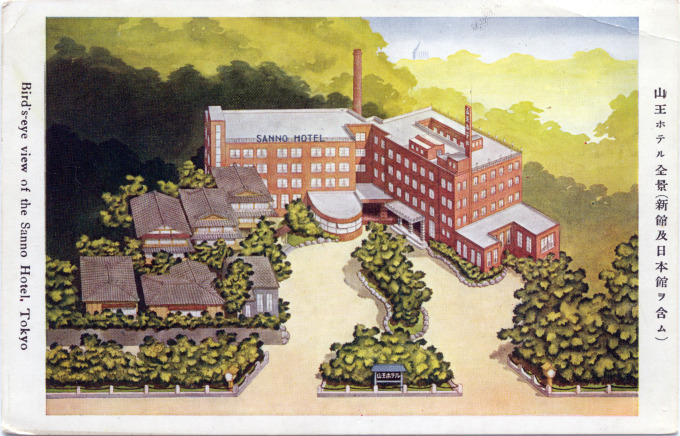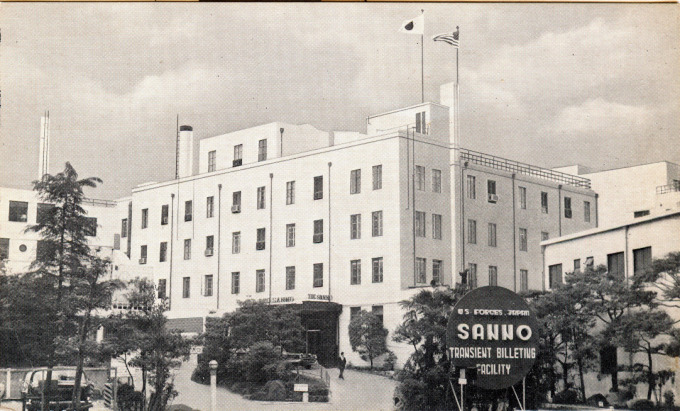“Meanwhile, Voukelitch had landed at Yokohama on February 11, 1933, with only the vaguest notion of what was expected of him. He had received only one instruction: He was to take lodgings in the Sanno Hotel in Tokyo, then watch the newspapers for an advertisement announcing a vacancy in the Bunka apartments. ‘When you see this ad,’ he was told, ‘move into the apartment and wait. Eventually a German person will come look for you. He will be your boss. This person will have a code. He will ask you, ‘How is Mr. Johnson in Paris?'”
– Target Tokyo: The Story of the Sorge Spy Ring, Gordon W.Prange, et al., 1984
The privately owned Sanno Hotel opened in 1932 in Akasaka, Tokyo. The hotel, with a Western design, was considered one of the top three accommodations in Tokyo along with the Imperial Hotel and the Dai-chi Hotel. As such, the Sanno, given its close proximity to the ministries and the army barracks at Aoyama and Roppongi in those pre-war days, was frequented by Japanese government and military officials. The hotel served as the headquarters for dissident military units during the 1936 abortive February 26 Incident. During the Pacific War, the Sanno was the base of Japan’s intelligence network. Several radio programs during the war emanated from Room 426, including ‘Zero Hour’ and ‘Humanity Calls’ and other propaganda.
The Sanno was gutted by Allied bombing during World War II. In 1947, American Occupation forces rebuilt the facility for use first as American family apartments and, later, as VIP and senior officers’ billeting. From 1959 to 1972, it was used as field officer lodging and, from 1972 to 1975, as billeting for E-7 and above personnel. Throughout this time, the property remained under the ownership of its original proprietors, to whom the government of Japan leased the facility for use by the US military.




Pingback: My First Adventure at Manos in Tokyo, 1972 - Watcher of Weasels
Pingback: Akasaka Mitsuke New Years Greeting, 1909. | Old Tokyo
Pingback: My First Adventure at Manos in Tokyo, 1972